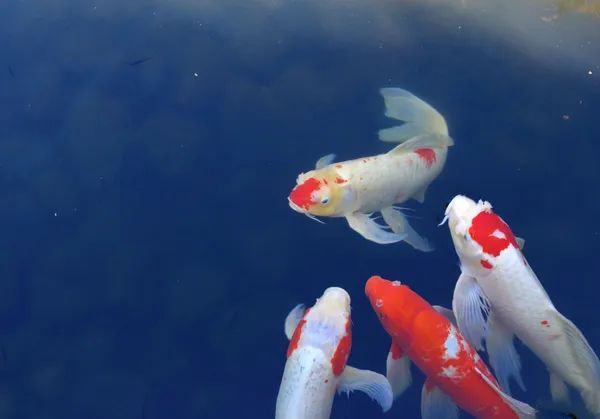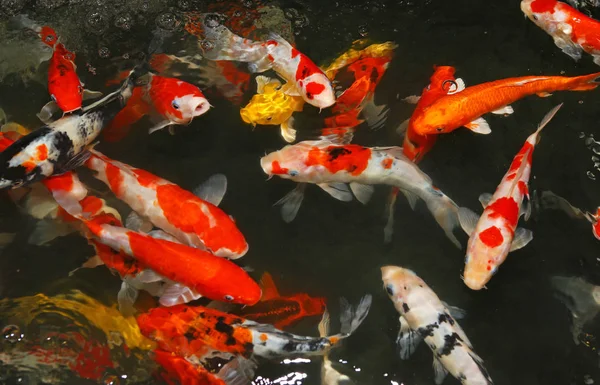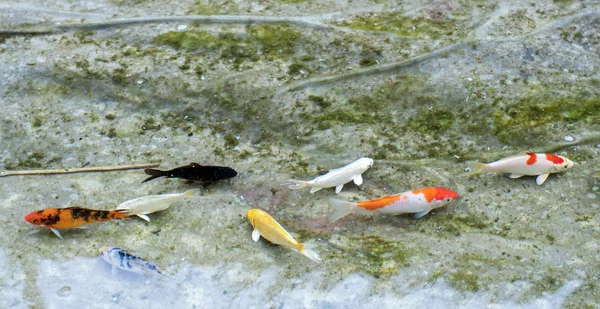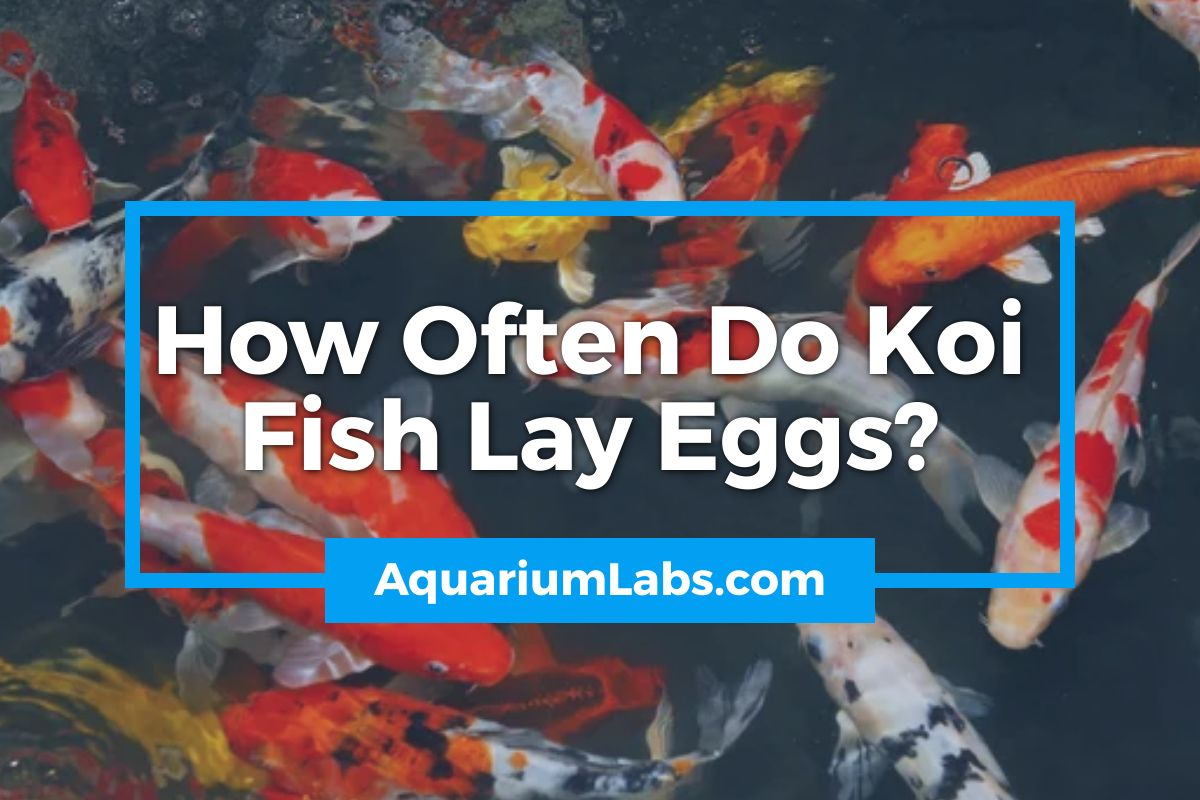Are you searching for correct information about koi fish and wondering, “How often do koi fish lay eggs?” Unsure about the requirements to raise koi fish from eggs until they reach sexual maturity?
In this article, you’ll learn how often your koi fish can lay eggs and how you can improve their reproduction rate.
What You Should Know About Male and Female Koi Fish
Koi fish are beautiful fish that can be kept in ponds. These ornamental fish are believed to have originated from China, where they were often consumed before becoming a decorative fish for ponds in Japan.
The fish are challenging to keep but can live for over 30 years if kept in a healthy fish pond.
It takes two years for female koi to attain maturity, though waiting before breeding them is best.
Female koi will naturally have a clutch of eggs per year. However, if you want to improve the level of reproduction of your koi fish, there are specific steps you can take to achieve this.
How Consistently Do Koi Fish Lay Eggs?
Koi fish often mate for a long time after maturity. If you properly care for your female koi, she can lay eggs bi-annually, but the number of eggs laid the second time will be significantly lower.
If you plan to spawn koi in an aquarium, it’s important to maintain the same tank conditions found in their natural environment. You should also provide the fish with adequate aquatic vegetation to ensure a safe place to lay their eggs.
Caring for Your Koi Fish
Koi fish have a lifespan that can reach 25 to 35 years if you provide the same conditions found in their natural environment.
As a koi fish owner, you should be ready to spend time caring for your fish as optimal conditions encourage koi spawning.
Koi fish are hardy and easy to care for. Below is a koi fish care sheet for your reference:
| Care Level | Medium |
| Temperament | Peaceful – Aggressive when ready to breed |
| Size | Up to 36 inches |
| Lifespan | 25-35 years |
| Minimum Tank Size | 240 gallons (908 liters) for adult koi fish |
| pH | Between 7.0 and 8.6 |
| Temperature | 65-75° F |
| Diet | Omnivor feeder |
Watch the video below for additional koi care instructions:
Distinctive Features of the Male and Female Koi Fish
When koi fish reach the peak of their sexuality at age 4-5, sexing them becomes easier (it’s difficult to tell them apart at the tender age of 2).
Note the distinctive features of female and male Koi fish below:
Male Koi Fish | Female Koi Fish | |
Body Shape | Long slender body | Short round body |
Pectoral Fins | Pointy, nontransparent, and profoundly colored fin | Round, and almost see-through fin |
Behavior During Mating Season | Males will try and nudge the female against a hard surface to squeeze her eggs out | Female will release pheromones to signal males |
Reproduction and Breeding in Koi Fish
Koi fish typically lay eggs annually. If you want to increase your koi population, it’s important to understand the correct process to breed them in captivity successfully.
The video below provides the information you need for successful breeding:
Sexual Maturity
While you can breed your koi fish at 2 years, spawning at this age isn’t recommended.
It usually takes koi fish 4 years to reach maturity. The female fish are likelier to lay more eggs that survive to adulthood at this age. Female koi also lay more eggs when kept in optimal water conditions.
How Many Eggs Do Koi Fish Typically Lay?
A 2-pound koi fish will typically lay around a hundred thousand eggs in a breeding cycle.
Professionals can typically determine the expected eggs from the size of the fish. A koi fish weighing around 10 pounds could lay over one million eggs.
A healthy one-pound female can lay 50,000 to 100,000 eggs, and many koi eggs survive to the fry stage in optimal water temperatures.
What Are Optimal Spawning Conditions for Koi Fish?
Your fish is likely to spawn annually. Its willingness to breed is often triggered by external factors such as water temperature, water condition, and length of the day in the spring.
An optimal pond setting will enable koi to lay their eggs and improve the odds of fry reaching maturity.
Spawning Pattern
If you plan to breed your koi in captivity, follow the guide below for the best results:
Pre-Spawning
Before the koi fish lays its eggs, male koi fish begin courting the female. If male and female koi fish are kept in the same tank, males often nudge the female.
Spawning
At the birthing stage, the female moves to the shallow edge of the pond to release her eggs. If you keep your koi fish in a tank, the female will often lay eggs in areas of dense vegetation.

Providing female koi with a spawning rope helps make breeding easier, so you’ll often notice one or more females on the spawning mats.
Egg Fertilization
The female’s mate will follow her a lot during the spawning stage. When the female releases the eggs, the male releases the sperm on the eggs.
This process might make your tank cloudy, but it’s simply the process of sexually mature males fertilizing the eggs the female lays.
Caring for Your Koi Fish Eggs
Once the eggs are fertilized, move them from the breeding tank to the nursery tank to give the fry a chance to survive.
Moving Eggs From Pond or Tank

It’s recommended to move your fertilized eggs to a special breeding tank before hatching to protect the young fry. Koi fish eat their spawn, so when the eggs laid by the female have been fertilized, keep them in a nursery tank to help them survive hatching. This will also keep the fry safe from other fish that may eat the koi eggs.
Koi fish typically spawn annually, and fertilized eggs are often found on pond plants after the female’s mate has fertilized it. The constancy of mating can also determine how many koi eggs breeding females produce.
What Do Koi Fish and Baby Koi Fish Look Like?

To identify baby koi fish, look for a brownish, almost translucent color with no white spots. They’re often found around spawning ropes, or you may see them around plants’ shallow areas.
Conclusion
Breeding koi fish isn’t easy and requires commitment on the part of the fish-keeper.
When a 1-pound female koi fish lays eggs, there will be roughly 50,000+ koi fish eggs! And if your koi fish lay eggs often, you can have your hands full!
Having the necessary information on koi fish breeding and hatching habits better prepares you for hatching new fry.
After reading this article, we hope you’ll be better equipped to protect your koi spawn from being eaten before they’re hatched. Best of luck!
Related Interesting Reads:

